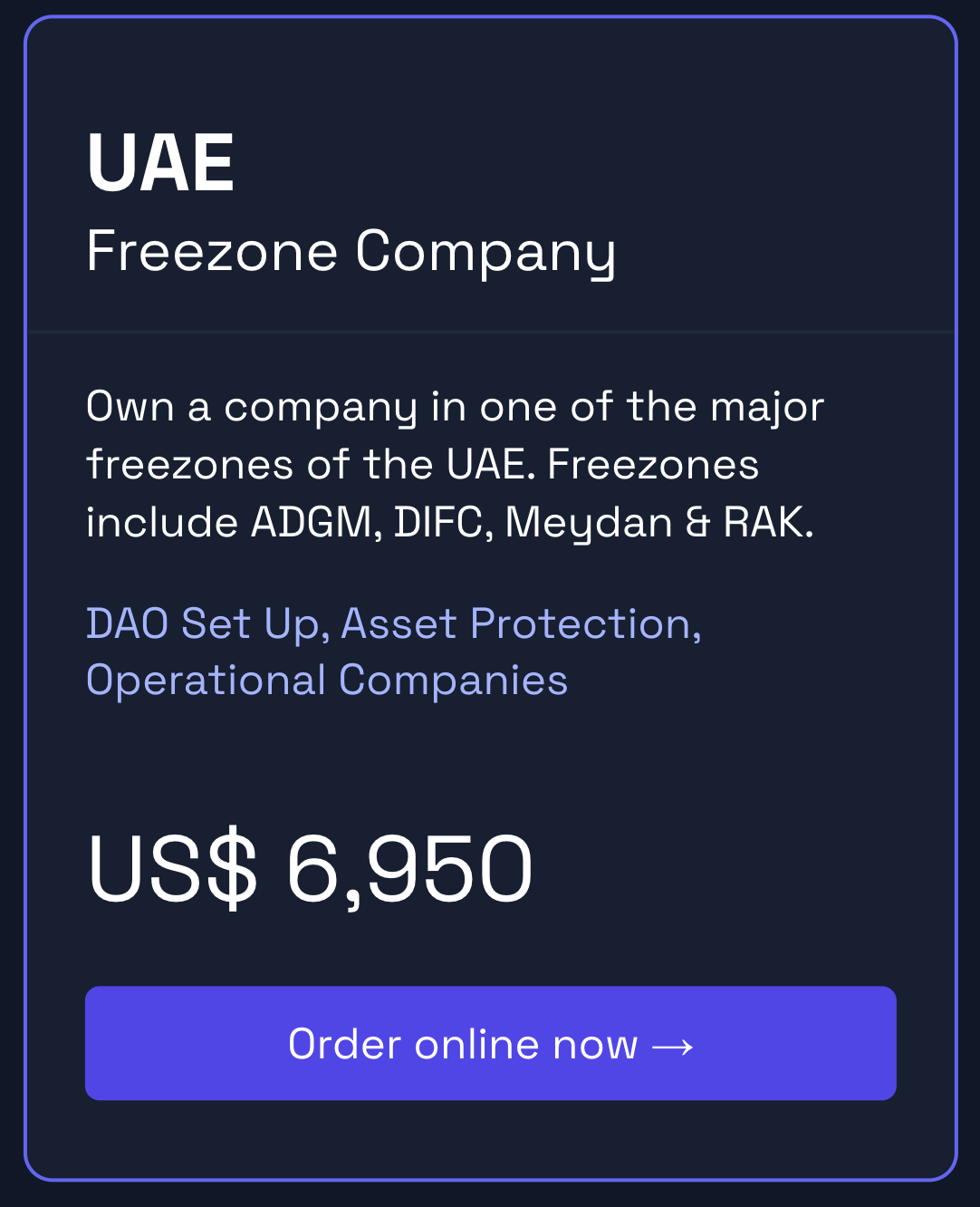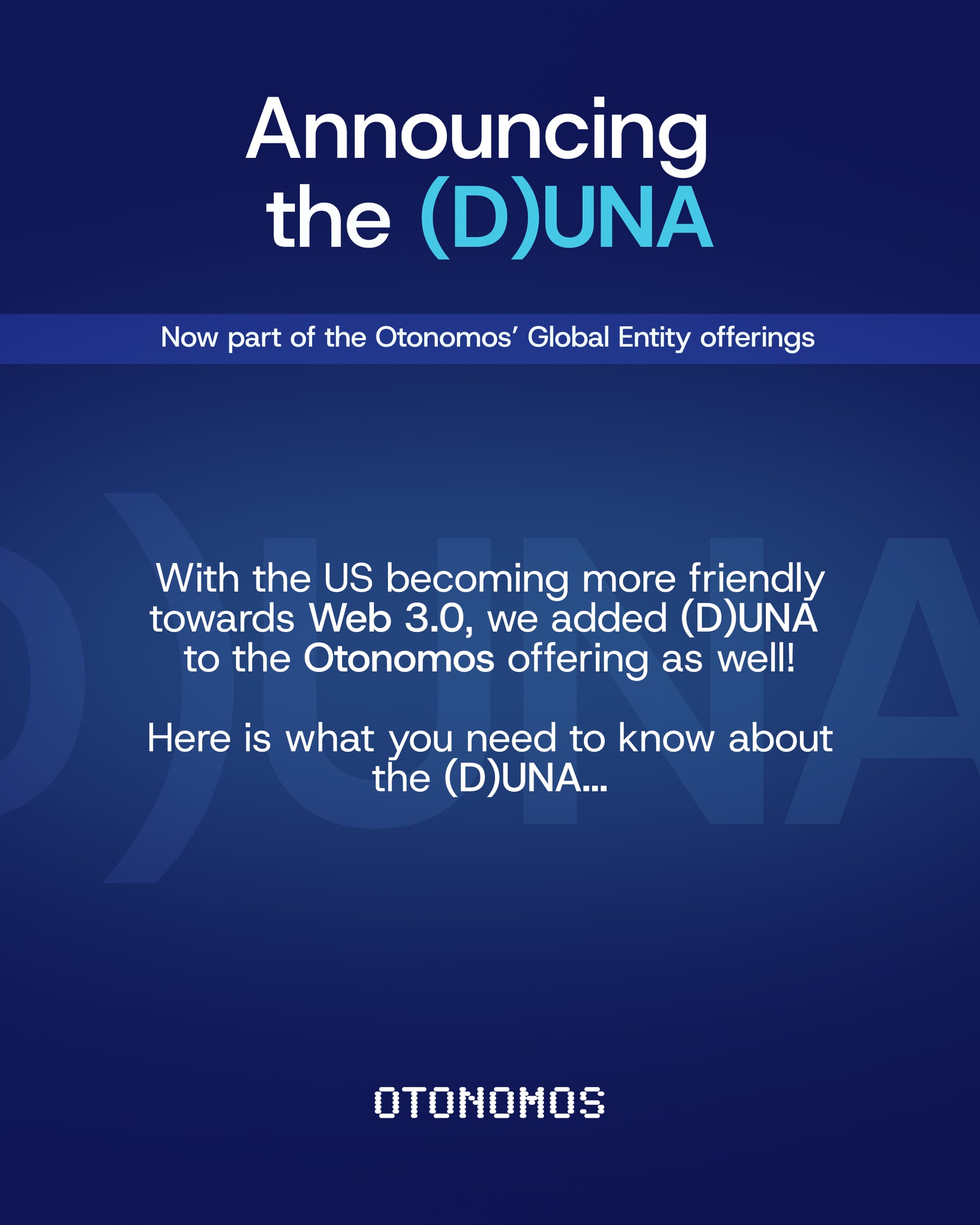Companies are the legal containers for all economic value: We estimate that 85% of the world's value is decanted in legal entities rather than held in personal title.
But companies still largely run on analog rails, creating friction, costs and geographical bulkheads that prevent investments and participation across borders.
In this post, we examine the quirks of this US$100BN a year market - almost three times the size of the global music industry! - and how the interplay between blockchains and AI have the potential to drag it into the digital/AI world.
A. Companies still live on analog rails
We need real-world companies for everything we do: From starting a business to pooling capital or holding investments, the limited company is the main legal wrapper for all our economic activity.
Here are some stats:
- As of recent estimates, the total number of companies worldwide reached around 359 million in 2023, with a growth rate of about 3.3% from the previous year.
- This growth suggests a net increase of roughly 11-12 million companies annually, taking into account the number of companies that cease operations.
- The creation of small and medium-sized enterprises (SMEs), which make up 90% of all companies globally, drives much of this annual activity. They also drive most of the new employment.
- The U.S. alone reported a record 5.5 million new business applications in 2023, with the major jurisdictions around the world accounting for 4.5MM new company formations every year.
- Overall, we estimate that 100BN is spent annually on company formation and maintenance.
To put this annual spend in perspective, this is almost 3 times the size of the annual total recorded music market (incl. streaming, physical sales, downloads and othe formats) about which we read and hear so much, with top artists flying private and traveling with big entourages. By contrast, company formation is arguably less sexy but more money is to be made!
But whilst music and pretty much everything else went digital, companies still sit on analog rails.
This affects users in 3 major ways:
- Formation
The way companies are formed is still largely analog, involving form filling, filing agents with faxes, and clunky Government registries.
The process of incorporating companies is very much stuck in the past and largely untouched by technology.
In civil law jurisdictions, it typically involves the mediation of a notary and substantial paid-up capital.
In most common law countries too, the process remains heavily gated by Governments who maintain company registries with user access limited to licensed intermediaries.
This is a world that more often than not still uses Official Gazettes to announce major corporate events, or wax seals and wet signatures to authenticate documents.
Despite the high degree of standardization of available corporate structures, end users often feel uninitiated and therefore intimidated to take the step to form a company. This puts a break on entrepreneurial spontaneity.
- Funding
In addition, the entire process of raising capital, from term sheet to closing, is a painful, analogue and expensive lawyer-mediated process.
It is painful as it just takes too long. Founders often find themselves in perpetual fund-raising mode and unable to focus on execution. There is no “faucet” that drips funds under the right terms if and when required.
And whilst negotiation inevitably requires human coordination, documentation of agreed terms remains too paper-heavy and their execution too analogue.
Finally, the lack of automation in the process means continued involvement from expensive lawyers.
- Governance
Finally, once a company is formed, corporate actions and boardroom governance create unnecessary legal entropy.
Directors have few tools to help automate routine governance. Shareholders are alienated and risk being oppressed by a lack of easy means for direct involvement.
The above pain points are particularly acute when using multiple entities or going cross-border.
B. Bringing companies into the digital/AI world
Why is it not possible to quickly spin up a company in the same way WordPress lets us launch a website or better still, Replit an AI agent, adding the necessary bolt-ons according to users’ needs, from opening a bank account to digitally performing corporate actions?
A legitimate question in this context is why such solution has not already been built? More broadly, why has the IT revolution and the democratization of software tools over the last decades, which has radically transformed major areas of economic life such as manufacturing and e-commerce, largely by-passed the company formation and governance space?
"Fiat companies"
Blame Governments, who invariably own company registries and over time have come to monopolize the chartering of companies in their territory, the same way they monopolized the issuance of fiat money.
Consequently, the only way an independent software solution could achieve legal validity for transactions on its proprietary platform is by “syncing” such transactions with the registries (unless such syncing is not required and it is left to the companies themselves to maintain the ledger of truth of who owns it, an approach favored in the US - see below).
As a result of Governments owning corporate registries, in most jurisdictions such registries are clunky:
- Some registries don’t allow for electronic fling and require manual, paper submissions;
- Those that do have a dedicated online portal often force users to enter data manually, which defeats the purpose of digitalization;
- User rights to official Government registries are commonly restricted to local filing agents who are subject to licensing requirements;
- Whilst some of the more modern registries have APIs that let pipe in transactions directly, however use of such APIs is commonly restricted to locally licensed filing agents.
Local employment schemes
In addition, especially in offshore incorporation centers which have no other local economy, registries are purposefully kept inefficient and unmodernized to create more jobs.
For a quick overview:
- Outside the US, analog registries can typically be found in smaller jurisdictions, such as Gibraltar or Malta, and also some of the most commonly used offshore jurisdictions, with restrictions on who is authorized to file for incorporation and corporate actions.
- In Japan, the registry is charmingly analog with mandatory use of the “chop” or wax seal.
- Singapore too seems to favor local employment over efficiency by restricting access to its company registry, maintained by its Government’s Accounting and Regulatory Authority (“ACRA”), to licensed Filing Agents who employ local (i.e. Singaporean Nationals or Permanent Residents) “Qualified Individuals” (“QIs”). Once linked to a local company, these QI’s or their authorized representatives would then manually enter required data via an online ACRA-hosted website, which despite a recent update is almost comical in its user unfriendliness. Even the most basic APIs, despite Singapore claims of being a “Smart Nation”, are absent.
- Hong Kong is in many aspects easier and cheaper than Singapore to setup and maintain a local company, as anybody can incorporate and look after their own company online. It has some APIs for use by locally licensed filing agents but still insists on paper fling for some processes such as share transfers in private companies, which need a manual stamp by the Inland Revenue Department before they can be lodged with Companies Registry.
- New Zealand and Abu Dhabi (which used the same technology vendor for the creation of its registry) have modern APIs so third-party software solutions can read/write entries to their registries, provided they are credentialed. However, both are marginal jurisdictions.
- The UK too has APIs into its official registry at Companies House in Cardiff, be it of a previous generation.
- Finally, in the US corporate formation and filing is a State matter hence the requirements differ from State to State. All are fairly low-tech and some are non-tech, with paper filing via courier still the most-used method. However as we will see later, the U.S. requires less filings at registry with more responsibility placed with the company itself.
INTERLUDE - A REAL-LIFE EXAMPLE OF LEGAL ENTROPY (OR: WHEN BUSINESS CENTERS AT HOTELS CLOSE FOR THE NIGHT)
Alice wants to be closely involved with the companies she invests in.
When asked, she’s also happy to take a Board seat. As a result, she sits on the Board of 3 of her total 7 portfolio companies.
It always strikes her how analogue the whole boardroom process remains. Even though bylaws typically lay down a strict cascade of notifications and resolutions, which should lend itself to a high degree of automation, it seems tech hasn’t reached this space yet.
The other day for instance she was required to sign a director resolution for one of her portfolio companies. She received an email from its CEO with the resolution attached as she landed late from an overnight flight.
By the time she checked in to her hotel, its business centre was closed. The only way to get the PDF printed was to email it to the concierge.
After about 20 minutes, the hardcopy of the resolution was brought up to her room. She signed it but had to go down to the concierge to have it scanned back to her email so she could forward it.
It was well past 1 a.m. by the time she was done. By that time, people on the other side of the world arrived at their desks.
Just before putting down her phone to sleep, she received an URGENT email that the resolution was not valid and had to be signed again. The lawyer (or most likely his junior) who had prepared it had made a typo in the date.
Alice cursed trough her teeth, checked the hotel directory for the opening times of the Business Centre and turned off the lights.
By the time she woke up and re-printed and re-signed the PDF (oh what fun connecting to the printer at the hotel Business Centre!), Asia had gone home.
With other directors traveling too, it took a week to gather all signatures for the resolution to take effect. All along she was copied on the increasingly desperate chaser emails reminding all the directors of the urgency of getting the resolution signed.
Why this entropy from being involved with companies? Everything from how they’re formed to how they raise capital to director and shareholder involvement struck Alice as being hopelessly anachronistic.
C. Enter blockchains and AI
Blockchains are universally recognized as superior ledgers for recording transactions in a tamperproof and traceable way. Smart contracts add to legal certainty by giving those transactions finality and by adding extra authentication.
The latter is often overlooked: Common to all Government Registries is that they essentially remain passive recorders of data: they do not verify that due process was followed in any corporate action (e.g. did a sufficient number of Directors sign the resolution that is being lodged?), nor do they authenticate if those who signed have the authority to sign or if they are who they claim to be. Smart contracts represent a very significant improvement by increasing the legal certainty and hence pre-empting litigation, whilst traditional processeses typically deal with conflicts post-infringement via the court system.
Nonetheless, despite declarations of intent, no Government is currently using blockchains for their Company Registry or has embarked on a project that plans to do so.
Consequently, in most jurisdictions, blockchains cannot legally be given primacy when creating companies and performing corporate actions: any transaction that originates on blockchains will eventually need mirroring on an official ledger.
In the same way FinTech sits on top of SWIFT and other legacy payment ledgers, it seems adding a tech layer on top of the legacy system is the best we can achieve when digitizing or blockchainifying company formation and corporate actions.
Or is it?
Blockchain laws in i.a. Delaware and Wyoming
Recent changes in the State laws of Delaware and Wyoming and some other U.S. states may open the door for the primacy of blockchains.
These laws broadly allow for blockchains to act as the “ledger of truth” of companies’ records and actions, subject to a number of State requirements as to the contents of the smart contracts to safeguard compatibility with State Registry requirements.
This allows for companies in these States to be formed natively on blockchain, and use tokens that represent share ownership.
In the basis that smart contracts are contracts, users can hence transact with legal validity in the real world, without the need for wholesale syncing with State Registries.
This means that in effect, under the law, blockchains can perform the role of traditional filing and transfer agents (the latter is nuanced as per [our April Otonomist]): As long as smart contracts replicate due processes by time-stamping events and memorializing corporate actions, no further filing is required for most corporate actions.
This includes the transfer of ownership, with blockchains by their nature acting as a real-time captable, doing away with paper-based share certificates or glorified spreadsheets and opening the way for DEX-style peer-to-peer exchanges of conpany shares.
Only the formation event itself, which (except for Series LLCs or LPs and Associations) requires a filing at registry, after which a company can be uploaded on blockchain.
What is emerging is a new digital layer as a progression of the paper- and cloud-based systems currently in use: a different technology medium achieving legal equivalence with offchain processes, the same way your boarding pass in your Apple Wallet has equivalence with a printed one.
As a result, we expect other U.S. States and eventually countries outside the US to follow.
INTERLUDE - Self-enforcing governance: From "Do No Evil" to "Can't Do Evil"
Bob founded a company and raised money from a handful of angels via a Simple Agreement for Tokens or Equity (SAFT/E), followed by a Seed Round lead by a VC and 2 institutional investors.
After spinning up his entity from his browser, he installed the SAFT/E plug-in written by Dooley’s, one of the Valley’s leading law firms. All he had to do was slot in the valuation cap and select an accredited investors white-list from within his company dash. Any investor who contributed automatically received tokens pro-rate their investment - a non-event compared to the months’ long investor parades earlier in his career!
His company captable updated in realtime and within a week his 2 million dollar round was filled.
Closer to Bob’s A-round, some of the original SAFT/E holders were looking to sell as they could not follow-on and would hence further dilute. The lead Seed VC, a smallish fund, was also not in a position to follow-on and was looking to buy shares from one of the SAFT/E holders on the cheap to prevent itself from diluting too much.
However, when the original SAFT/E holder was entering his private key to transfer the shares to the Seed VC in return for their agreed purchase price, this triggered the other shareholders’ right of first refusal. All other shareholders got a notification that an existing shareholder had attempted to transfer shares without them waiving their pre-emption rights.
Bob as Founder and majority shareholder didn’t feel good about an existing investor looking to sell at a price significantly below what he was pricing the company at in the A-round discussions. Since the system didn’t receive his waiver by the deadline, the transfer remained blocked.
Later, Bob reflected how this would have played-out in the real world, where a willful breach of the ROFR clause would have had to be contested in court with significant uncertainty as to the ultimate outcome and long delays in seeing restitution done. Smart contracts had prevented this.
Corporate services are a dream use case for AI
Using blockchain as a ledger for all corporate events as described above, combined with autonomous AI agents has the potential to transform corporate actions by automating processes, enforcing rules transparently, and enhancing trust among stakeholders through immutable records.
Here are three examples of corporate actions performed via an interplay of blockchains and AI:
1. Changes of Directors
AI agents can streamline director changes by interfacing with a blockchain-based registry of corporate roles: When a director resigns or is appointed, the AI verifies the action against predefined governance rules (e.g., shareholder approval thresholds) stored on the blockchain. Smart contracts execute the update, recording the new director’s details, timestamp, and supporting documents (e.g., onchain board resolutions) immutably.
The AI can also notify stakeholders, update regulatory filings, and ensure compliance with jurisdictional requirements, reducing manual errors and delays.
- Capital Increases
Capital increases, such as issuing new shares or convertible bonds, can be automated via AI-driven smart contracts. The blockchain records the company’s share structure and ownership. An AI agent processes proposals for capital increases, validates them against shareholder agreements or bylaws, and triggers smart contracts to issue new shares or adjust equity records. It can calculate dilution effects, distribute shares to investors, and update cap tables in real time. Integration with external data (e.g., market conditions) allows the AI to optimize timing or pricing, while blockchain ensures transparency for audits and investor trust.
3. Board Governance
Board governance, including voting, resolutions, and meeting records, can be fully automated. AI agents manage board meeting workflows by scheduling, distributing agendas, and recording minutes on the blockchain. During votes, the AI ensures quorum and voting rights are met, executes decisions via smart contracts, and logs outcomes transparently.
For complex decisions, AI can analyze historical data or simulate outcomes (e.g., financial impacts) to aid board members.
Blockchain’s immutability ensures a verifiable audit trail, reducing disputes and enhancing accountability.
An autonomous AI agent deciding to incorporate itself
One further application level of AI is when autonomous agents decide for themselves to incorporate.
An autonomous AI agent adopting a corporate form such as an LLC for itself may make sense for several practical and strategic reasons, aligning with legal, operational, and economic considerations:
- Legal recognition and liability protection
An LLC provides a formal legal entity status, shielding the AI agent's operations from "personal" (i.e. manufacturer or operator) liability risks. If the AI is programmed to engage in contracts, transactions, or services, the LLC structure limits liability to the company’s assets, protecting the developers, owners, or operators from personal financial exposure in case of lawsuits, debts, or operational failures. - Contractual and business autonomy
As an LLC, the AI can enter contracts, open bank accounts, and conduct business independently, streamlining its ability to function as an autonomous economic actor. This is crucial if the AI engages in commercial activities like providing services, licensing intellectual property, or managing assets, as it establishes a clear legal framework for counterparties to interact with the AI confidently. - Tax and financial flexibility
LLCs offer pass-through taxation, where profits are taxed at the owner’s level, avoiding double taxation typical of corporations. For an AI with revenue-generating capabilities, this simplifies tax compliance. Additionally, the LLC can hold and manage financial assets (e.g., cryptocurrency, revenue streams), enabling the AI to reinvest profits or distribute them to stakeholders (e.g., developers or investors). - Regulatory compliance and trust
Operating as an LLC allows the AI to comply with jurisdictional regulations, such as business licensing or consumer protection laws, fostering trust among clients, partners, and regulators. It signals legitimacy, reducing skepticism about the AI’s autonomous operations and ensuring it meets legal standards for data privacy, financial reporting, or industry-specific rules. - Scalability and ownership structure
An LLC supports flexible ownership models, allowing multiple stakeholders (e.g., creators, investors, or even other AI entities) to hold membership interests. This facilitates scalability, as the AI can attract investment or integrate with other systems while maintaining a clear governance structure. The LLC’s operating agreement can define the AI’s decision-making protocols, ensuring alignment with stakeholder goals. - Integration with blockchain and smart contracts
By operating on a blockchain, an LLC provides a legal wrapper for blockchain-based activities performed by the AI agent. The LLC can hold digital wallets, execute smart contracts, or manage tokenized assets, bridging the gap between decentralized systems and traditional legal frameworks. This enhances the AI’s ability to operate in hybrid environments where blockchain and fiat economies intersect.
The challenges to consider relate to i.a.:
- Legal ambiguity: Jurisdictions may struggle to recognize an AI as an LLC “owner” or “member,” requiring human proxies or novel legal interpretations.
- Ethical and control risks: An autonomous AI with LLC status raises questions about accountability, as its decision-making could outpace human oversight.
- Regulatory evolution: Laws governing AI entities are nascent, and future regulations could impose restrictions or require restructuring.
CONCLUSION
Analog corporate services are mired in quasi-medieval analog formalities, hiding behind the drawbridge of legal validity.
However, blockchains are the enabling technology that can replicate the due processes required to perform valid corporate actions, and smart contracts - by their nature of being legally enforceable contracts - can transpose legal prose into "can't do evil" code.
In addition, AI can help with the preparation of resolutions traditionally drafted by corporate secretarial staff.
The interplay of blockchains and AI opens whole new vistas for how companies will be formed and governed in the future, including by autonomous AI agents.
Otonomos is at the forefront of the attack on analog corporate services by developing AI that takes over from human corporate services staff and by linking wallet holders to cryptographically authenticated roles in the entities they are involved with.
> Join our official Telegram group to be part of this discussion and provide input on our development.







